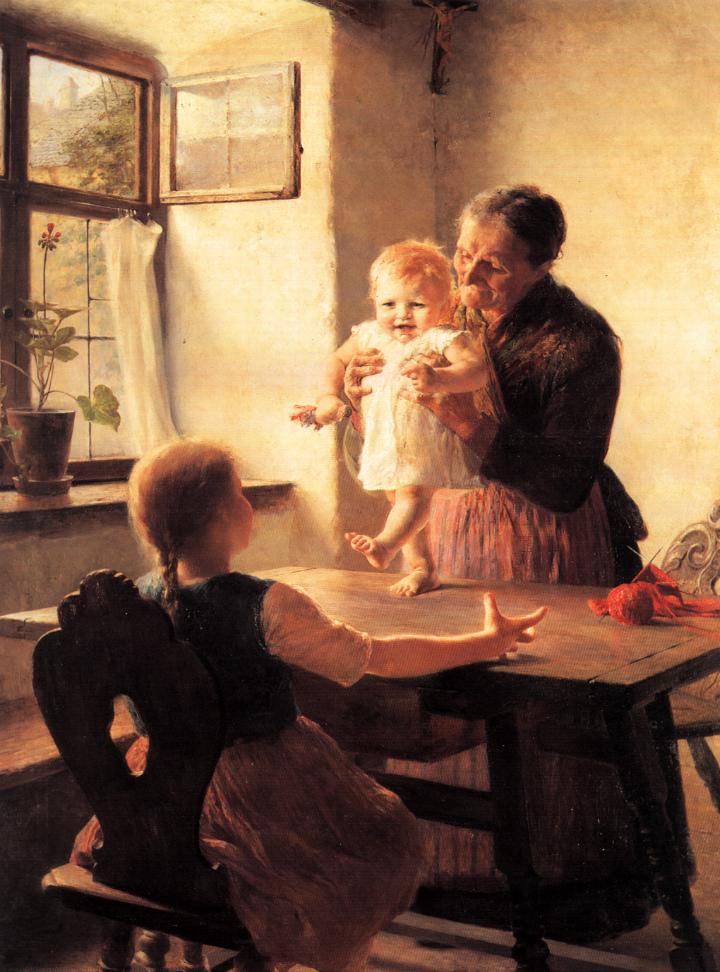|
Bassinet
A bassinet, bassinette, or cradle is a bed specifically for babies from birth to about four months. Bassinets are generally designed to work with fixed legs or caster wheels, while cradles are generally designed to provide a rocking or gliding motion. Bassinets and cradles are distinguished from Moses baskets and carry cots, which are designed to be carried and sit directly on the floor or furniture. After four months, babies are often transferred to a crib (American usage) or cot (UK usage). In the United States, however, the bedside sleeper is the prevalent option, since they are generally bigger, recommended up to 6 months, and often used up to a year. Design A bassinet is typically a basket-like structure on free-standing legs, often with casters. [...More Info...] [...Related Items...] OR: [Wikipedia] [Google] [Baidu] |
Infant Bed
An infant bed (commonly called a cot in British English, and, in American English, a crib, or far less commonly, stock) is a small bed especially for infants and very young children. Infant beds are a historically recent development intended to contain a child capable of standing. The cage-like design of infant beds restricts the child to the bed. Between one and two years of age, children are able to climb out and are moved to a toddler bed to prevent an injurious fall while escaping the bed. Infant beds are more common in Western countries, employed by the majority of parents as an alternative to sharing a bed ( co-sleeping). History The name "crib" was used to describe a slatted, high-sided child's bed. It derives from the Old English word " cribb" which means " manger" (food trough, referring to the shape of a bassinette) or stall (implying corralling the child). It was not until the 19th century that infant beds developed from bassinettes, acquiring a role of kee ... [...More Info...] [...Related Items...] OR: [Wikipedia] [Google] [Baidu] |
Lullaby
A lullaby (), or a cradle song, is a soothing song or piece of music that is usually played for (or sung to) children (for adults see music and sleep). The purposes of lullabies vary. In some societies, they are used to pass down cultural knowledge or tradition. In addition, lullabies are often used for the developing of communication skills, indication of emotional intent, maintenance of infants' undivided attention, modulation of infants' arousal, and regulation of behavior. Perhaps one of the most important uses of lullabies is as a sleep aid for infants. As a result, the music is often simple and repetitive. Lullabies can be found in many countries, and have existed since ancient times. Etymology The term 'lullaby' derives from the Middle English ''lullen'' ("to lull") and ''by''[''e''] (in the sense of "near"); it was first recorded circa 1560. A folk etymology derives ''lullaby'' from "Lilith-Abi" (Hebrew language, Hebrew for "Lilith, begone"). In the Jewish tradition, ... [...More Info...] [...Related Items...] OR: [Wikipedia] [Google] [Baidu] |
Baby Transport
Various methods of transporting children have been used in different cultures and times. These methods include baby carriages (prams in British English), infant car seats, portable bassinets (carrycots), strollers (pushchairs), slings, backpacks, baskets and bicycle carriers. The large, heavy prams (short for perambulator), which had become popular during the Victorian era, were replaced by lighter designs during the latter half of the 1900s. Baskets, slings and backpacks Infant carrying likely emerged early in human evolution as the emergence of bipedalism would have necessitated some means of carrying babies who could no longer cling to their mothers and/or simply sit on top of their mother's back. On-the-body carriers are designed in various forms such as baby sling, backpack carriers, and soft front or hip carriers, with varying materials and degrees of rigidity, decoration, support and confinement of the child. Slings, soft front carriers, and "baby carriages" are typi ... [...More Info...] [...Related Items...] OR: [Wikipedia] [Google] [Baidu] |
Babies
In common terminology, a baby is the very young offspring of adult human beings, while infant (from the Latin word ''infans'', meaning 'baby' or 'child') is a formal or specialised synonym. The terms may also be used to refer to juveniles of other organisms. A newborn is, in colloquial use, a baby who is only hours, days, or weeks old; while in medical contexts, a newborn or neonate (from Latin, ''neonatus'', newborn) is an infant in the first 28 days after birth (the term applies to premature, full term, and postmature infants). Infants born prior to 37 weeks of gestation are called "premature", those born between 39 and 40 weeks are "full term", those born through 41 weeks are "late term", and anything beyond 42 weeks is considered "post term". Before birth, the offspring is called a fetus. The term ''infant'' is typically applied to very young children under one year of age; however, definitions may vary and may include children up to two years of age. When a human child ... [...More Info...] [...Related Items...] OR: [Wikipedia] [Google] [Baidu] |
Baby Transport
Various methods of transporting children have been used in different cultures and times. These methods include baby carriages (prams in British English), infant car seats, portable bassinets (carrycots), strollers (pushchairs), slings, backpacks, baskets and bicycle carriers. The large, heavy prams (short for perambulator), which had become popular during the Victorian era, were replaced by lighter designs during the latter half of the 1900s. Baskets, slings and backpacks Infant carrying likely emerged early in human evolution as the emergence of bipedalism would have necessitated some means of carrying babies who could no longer cling to their mothers and/or simply sit on top of their mother's back. On-the-body carriers are designed in various forms such as baby sling, backpack carriers, and soft front or hip carriers, with varying materials and degrees of rigidity, decoration, support and confinement of the child. Slings, soft front carriers, and "baby carriages" are typi ... [...More Info...] [...Related Items...] OR: [Wikipedia] [Google] [Baidu] |
Babycare
Child care, also known as day care, is the care and supervision of one or more children, typically ranging from three months to 18 years old. Although most parents spend a significant amount of time caring for their child(ren), childcare typically refers to the care provided by caregivers who are not the child's parents. Childcare is a broad topic that covers a wide spectrum of professionals, institutions, contexts, activities, and social and cultural conventions. Early childcare is an important and often overlooked component of child development. A variety of people and organizations are able to care for children. The child's extended family may also take on this caregiving role. Another form of childcare is that of center-based childcare. In lieu of familial caregiving, these responsibilities may be given to paid caretakers, orphanages or foster homes to provide care, housing, and schooling. Professional caregivers work within the context of center-based care (including crèc ... [...More Info...] [...Related Items...] OR: [Wikipedia] [Google] [Baidu] |
Toddler Bed
A toddler is a child approximately 1 to 3 years old, though definitions vary. The toddler years are a time of great cognitive, emotional and social development. The word is derived from "toddle", which means to walk unsteadily, as children at this age do. Developmental milestones Toddler development can be broken down into a number of interrelated areas. There is reasonable consensus about what these areas may include: * Physical: growth or an increase in size. * Gross motor: the control of large muscles which enable walking, running, jumping and climbing. * Fine motor: the ability to control small muscles; enabling the toddler to feed themselves, draw and manipulate objects. * Vision: the ability to see near and far and interpret what is seen. * Hearing and speech: the ability to hear and receive information and listen ( interpret), and the ability to understand and learn language and use it to communicate effectively. * Social: the ability to interact with the world through ... [...More Info...] [...Related Items...] OR: [Wikipedia] [Google] [Baidu] |
Smart Home
''SMart'' was a British CBBC television programme based on art, which began in 1994 and ended in 2009. The programme was recorded at BBC Television Centre in London. Previously it had been recorded in Studio A at Pebble Mill Studios in Birmingham. The format is similar to the Tony Hart programmes '' Take Hart'' and '' Hartbeat''. The show was revamped into an hour-long show in 2007; from 1994 to 2006 it was previously a 25-minute show. From 1994 to 2005, the show also featured Morph, originally from ''Take Hart''. The series run featured 199 episodes, last airing on 11 August 2011. Production The BBC noticed the success of '' Art Attack'' with Neil Buchanan for CITV which started in 1990 and decided to create their own art show that was accessible to children similar to ''Art Attack''. The original theme tune was composed by Kjartan Poskitt, famous for the '' Murderous Maths'' series of books. From 2003, a different tune was used, written by Steve Brown (known as the fict ... [...More Info...] [...Related Items...] OR: [Wikipedia] [Google] [Baidu] |
Back Strain
Back strain is the injury occurring to muscles or tendons. Due to back strain, the tendons and muscles supporting the spine are twisted or pulled. Chronic back strain occurs because of the sustained trauma and wearing out of the back muscles. Acute back strain can occur following a single instance of over stressing of back muscles, as in lifting a heavy object. Chronic back strain is more common than the acute type. To avoid back strain it is important to bend the knees whenever you lift a heavy object – see partial squats. Signs and symptoms The pain over the back is localized and does not radiate into the leg. It occurs suddenly and may be accompanied by muscle spasms. The pain is dull, aching type and decreases on rest. It may be aggravated with activity. Cause Diagnosis Treatment Back strain is treated using analgesics such as ibuprofen, rest and use of ice pack An ice pack or gel pack is a portable bag filled with water, refrigerant gel, or liquid, meant to pro ... [...More Info...] [...Related Items...] OR: [Wikipedia] [Google] [Baidu] |





